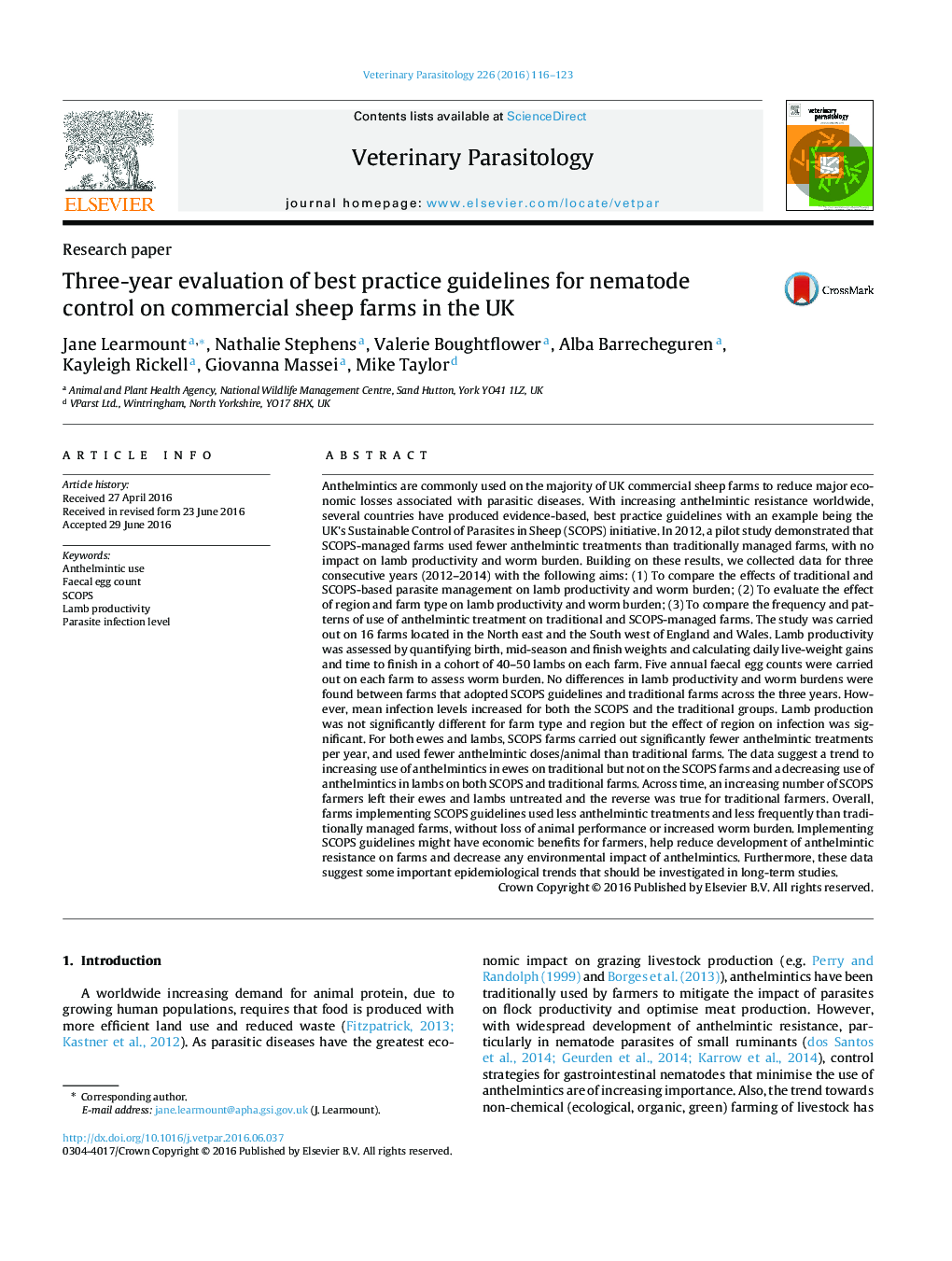| کد مقاله | کد نشریه | سال انتشار | مقاله انگلیسی | نسخه تمام متن |
|---|---|---|---|---|
| 5802013 | 1555650 | 2016 | 8 صفحه PDF | دانلود رایگان |
- Farms using best practice principles used fewer anthelmintic treatments than traditional farms.
- Best practice has no negative impact on lamb productivity and worm burden.
- Best practice has economic and environmental benefits for farmers.
Anthelmintics are commonly used on the majority of UK commercial sheep farms to reduce major economic losses associated with parasitic diseases. With increasing anthelmintic resistance worldwide, several countries have produced evidence-based, best practice guidelines with an example being the UK's Sustainable Control of Parasites in Sheep (SCOPS) initiative. In 2012, a pilot study demonstrated that SCOPS-managed farms used fewer anthelmintic treatments than traditionally managed farms, with no impact on lamb productivity and worm burden. Building on these results, we collected data for three consecutive years (2012-2014) with the following aims: (1) To compare the effects of traditional and SCOPS-based parasite management on lamb productivity and worm burden; (2) To evaluate the effect of region and farm type on lamb productivity and worm burden; (3) To compare the frequency and patterns of use of anthelmintic treatment on traditional and SCOPS-managed farms. The study was carried out on 16 farms located in the North east and the South west of England and Wales. Lamb productivity was assessed by quantifying birth, mid-season and finish weights and calculating daily live-weight gains and time to finish in a cohort of 40-50 lambs on each farm. Five annual faecal egg counts were carried out on each farm to assess worm burden. No differences in lamb productivity and worm burdens were found between farms that adopted SCOPS guidelines and traditional farms across the three years. However, mean infection levels increased for both the SCOPS and the traditional groups. Lamb production was not significantly different for farm type and region but the effect of region on infection was significant. For both ewes and lambs, SCOPS farms carried out significantly fewer anthelmintic treatments per year, and used fewer anthelmintic doses/animal than traditional farms. The data suggest a trend to increasing use of anthelmintics in ewes on traditional but not on the SCOPS farms and a decreasing use of anthelmintics in lambs on both SCOPS and traditional farms. Across time, an increasing number of SCOPS farmers left their ewes and lambs untreated and the reverse was true for traditional farmers. Overall, farms implementing SCOPS guidelines used less anthelmintic treatments and less frequently than traditionally managed farms, without loss of animal performance or increased worm burden. Implementing SCOPS guidelines might have economic benefits for farmers, help reduce development of anthelmintic resistance on farms and decrease any environmental impact of anthelmintics. Furthermore, these data suggest some important epidemiological trends that should be investigated in long-term studies.
Journal: Veterinary Parasitology - Volume 226, 15 August 2016, Pages 116-123
